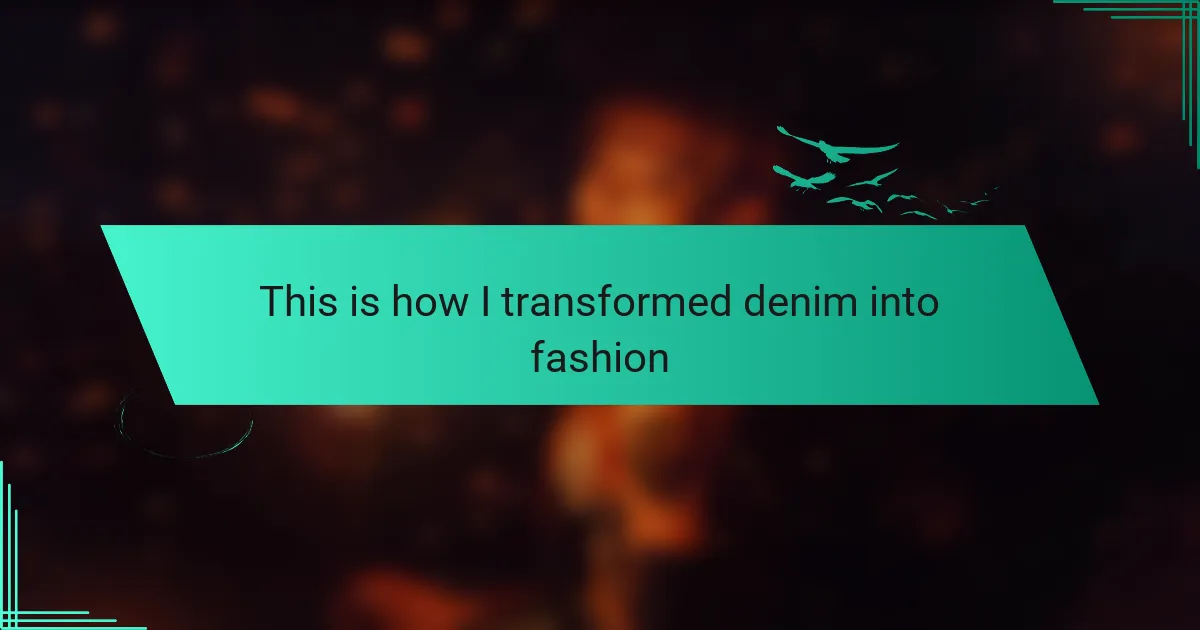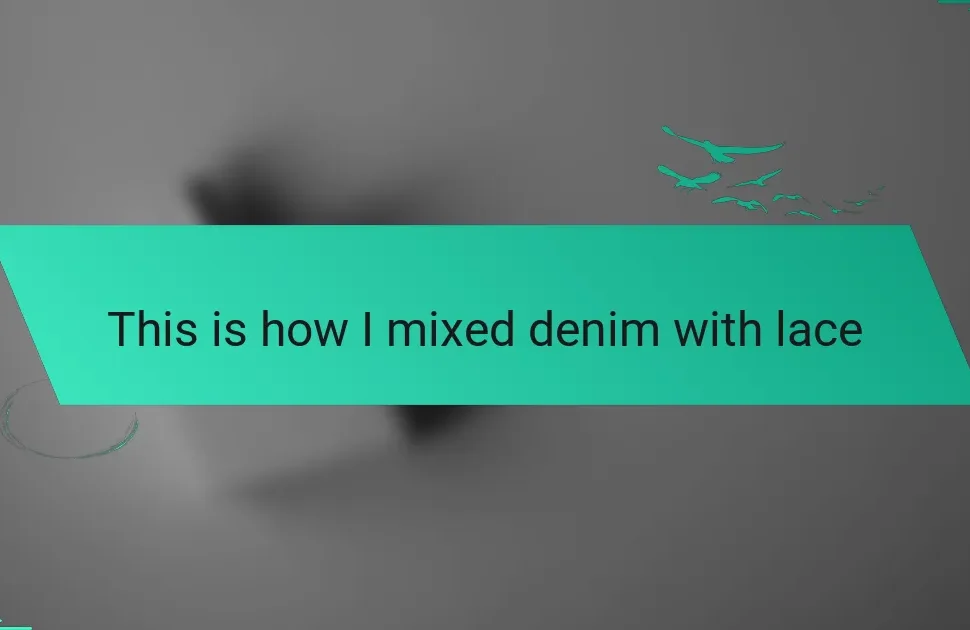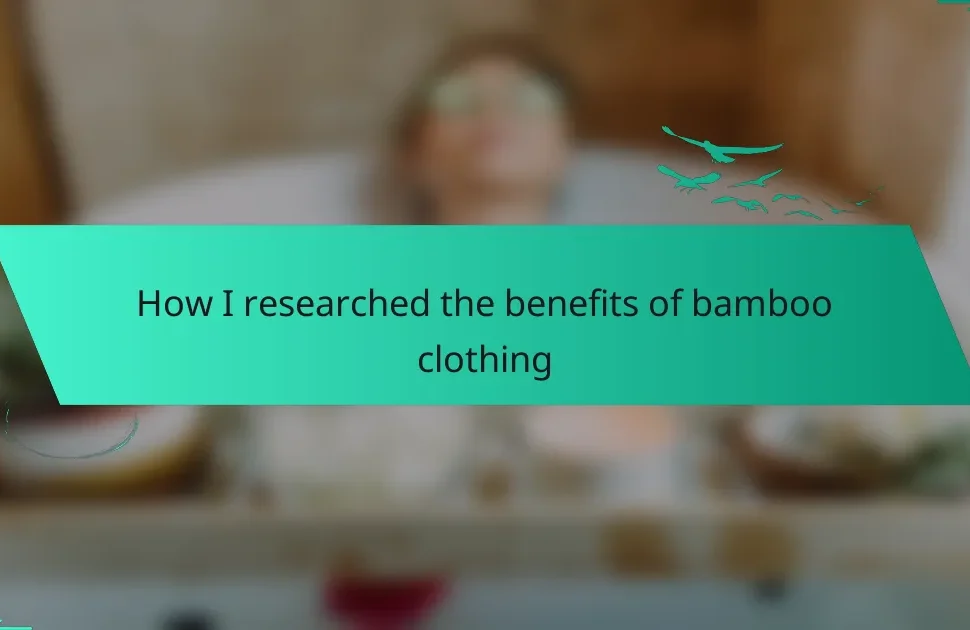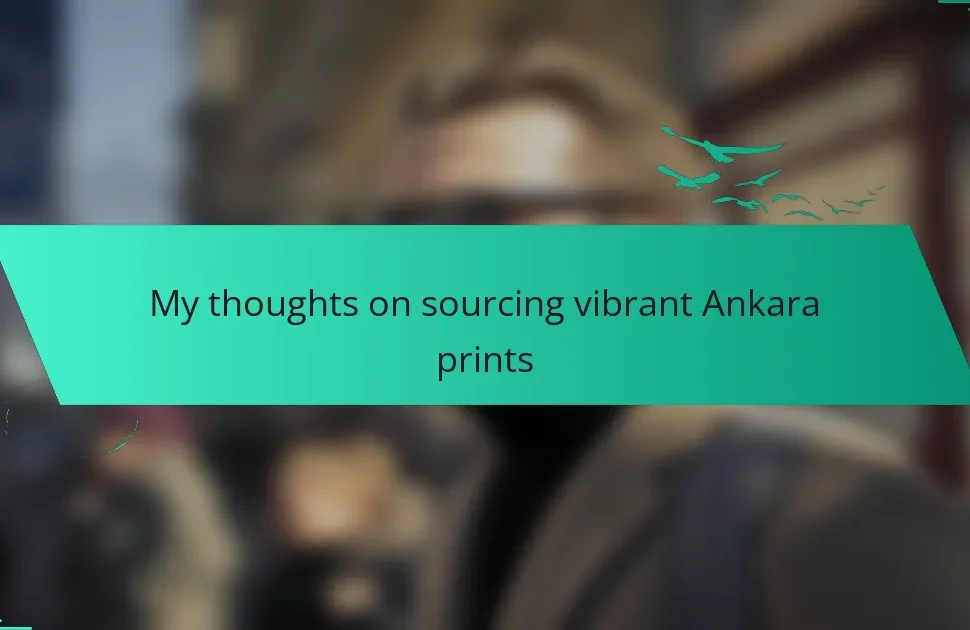Key takeaways
- Vintage fashion trends influence contemporary DIY projects, allowing for creative reinventions of classic styles.
- DIY fashion promotes sustainability by repurposing denim, reducing waste, and fostering individuality through unique designs.
- Essential tools for denim transformation include quality fabric scissors, a sewing machine, and measuring tools to ensure precision.
- Techniques like distressing, patching, and embellishing enhance creativity and personalize denim garments, making each piece a unique expression of style.
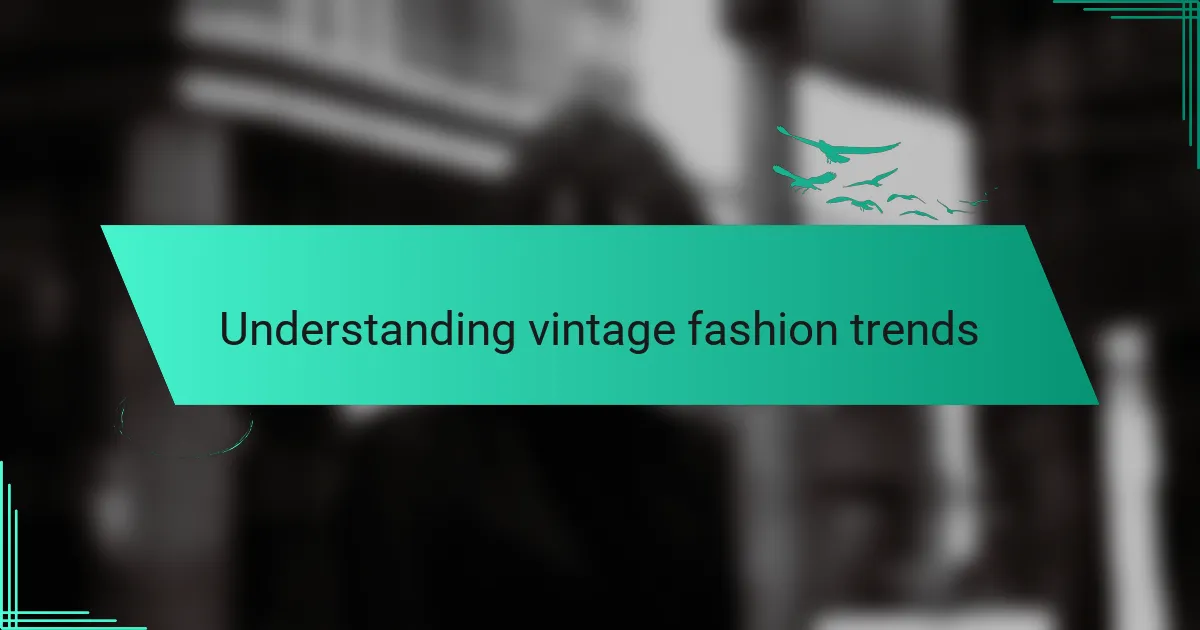
Understanding vintage fashion trends
Understanding vintage fashion trends is essential for any DIY enthusiast, especially when it comes to transforming denim. I’ve always found that vintage trends often reflect a certain nostalgia, bringing back styles that resonate with personal stories and memories. For instance, I remember my grandmother’s 70s high-waisted jeans that she wore with such confidence—those styles inspire me to reinvent similar pieces today.
Each decade in fashion has its distinct characteristics, especially with denim. The well-loved distressed look of the 90s reminds me of my high school days when I’d scour thrift stores for the perfect pair to customize. This connection to the past not only influences my designs but also fosters a deeper appreciation for the fabric’s evolution over time.
| Decade | Denim Trend |
|---|---|
| 1970s | Flared jeans and colorful denim |
| 1980s | High-waisted, acid-wash style |
| 1990s | Baggy jeans and distressed looks |
| 2000s | Low-rise jeans and embellishments |
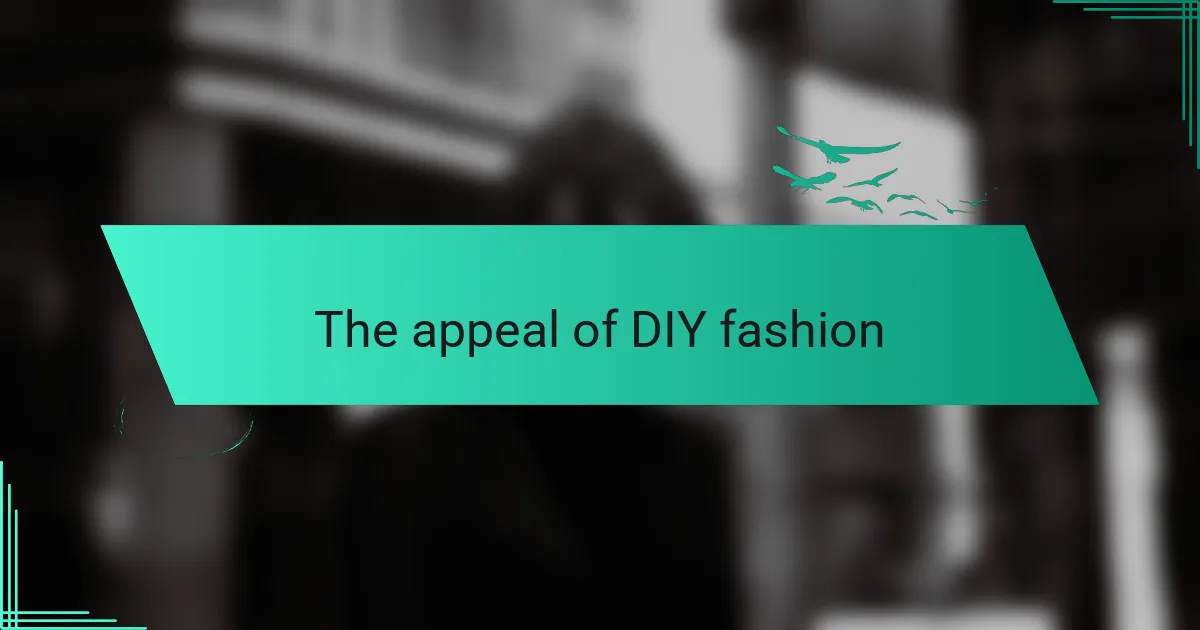
The appeal of DIY fashion
The appeal of DIY fashion is truly captivating. I remember the first time I transformed an old pair of jeans into a stylish bag; it was exhilarating to wear something I created myself. There’s a unique satisfaction in crafting your own pieces, knowing that no one else will have the same style.
When I dive into a DIY project, it feels like a journey. The process not only ignites my creativity, but it also allows me to connect more deeply with the materials. Each stitch tells a story, and I find joy in breathing new life into forgotten fabrics.
The beauty of DIY fashion lies in its ability to express individuality while being environmentally conscious. By refurbishing denim, we contribute to a more sustainable practice, transforming waste into wearable art.
| Aspect | DIY Fashion |
|---|---|
| Creativity | Allows personal expression and unique designs |
| Sustainability | Reduces waste by repurposing old materials |
| Cost-Effectiveness | Often cheaper than buying new clothes |
| Connection | Builds a deeper relationship with your wardrobe |
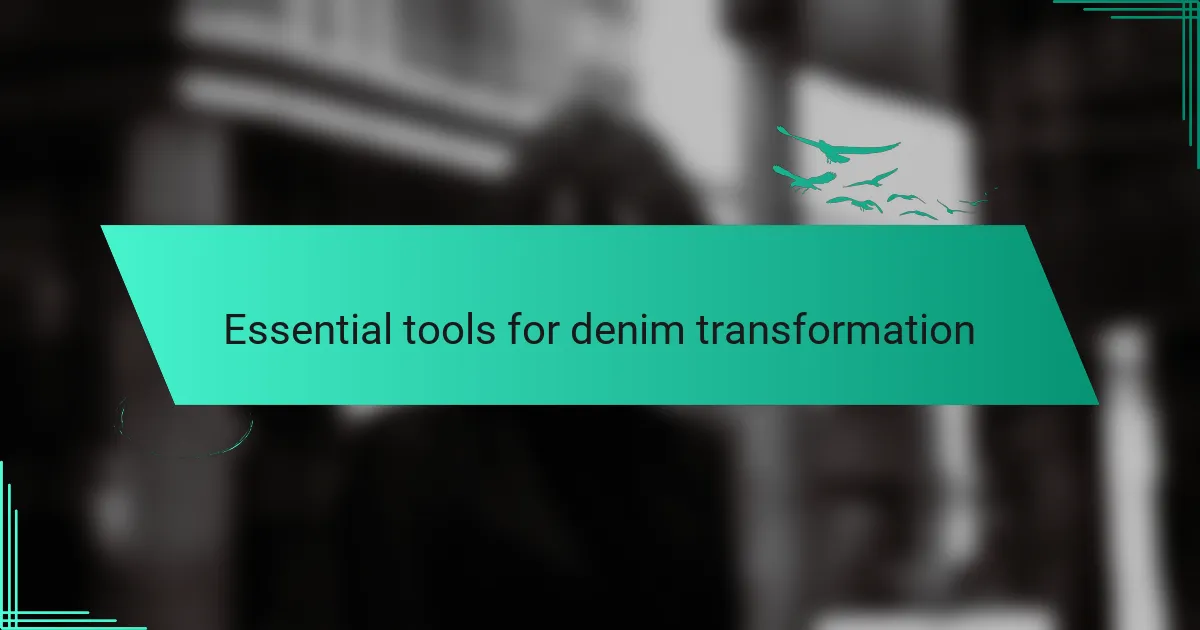
Essential tools for denim transformation
When transforming denim, having the right tools can make a world of difference. A good pair of fabric scissors is essential. I remember my first attempt at a denim project—struggling with dull scissors left me frustrated. Investing in sharp, quality scissors provided a clean cut that made my designs look polished right from the start.
Additionally, a sewing machine is an absolute game-changer. There’s a certain thrill in watching the fabric come together seamlessly. I still recall the first time I used mine to add a playful patch to an old pair of jeans; the final result was so satisfying. A sewing machine not only speeds up the process but also allows for more intricate designs.
Don’t overlook the importance of measuring tools. A simple tape measure can save you from countless mistakes. In my experience, taking the time to measure correctly means I’m less likely to end up with a design that doesn’t fit or look quite right. It’s those little details that can truly elevate a DIY project from good to great.
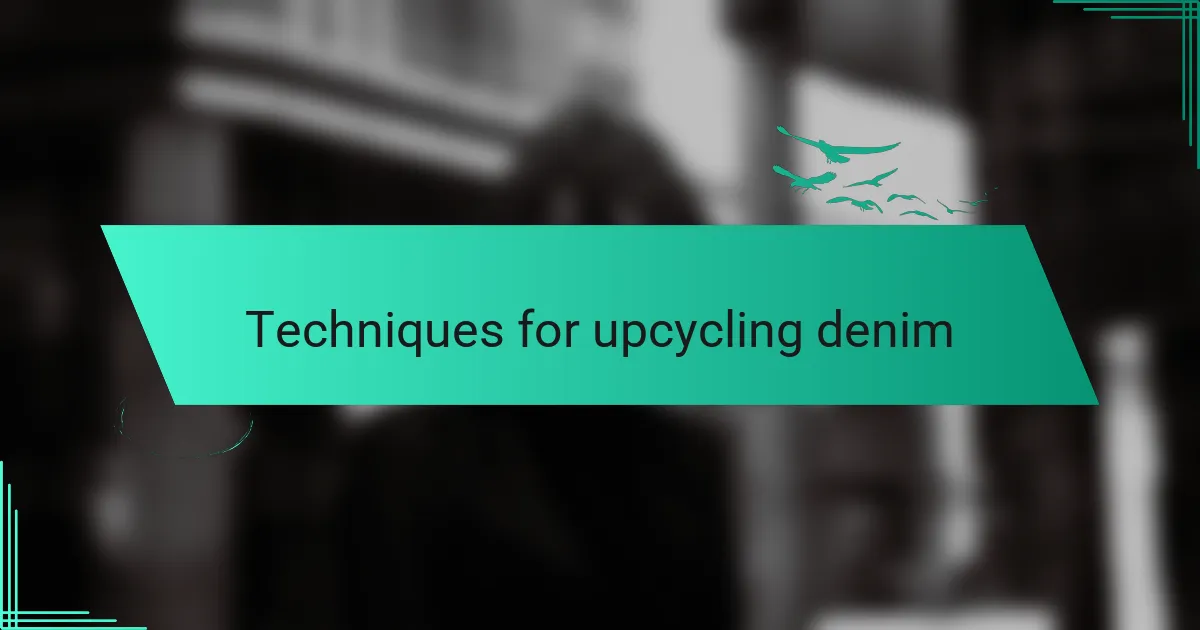
Techniques for upcycling denim
Upcycling denim can be an exciting journey that transforms not just the fabric, but your creativity as well. One technique I find particularly rewarding is distressing, where you can give old jeans a fresh, trendy look by simply using sandpaper or a razor. It’s amazing how a little fraying at the hem can evoke a sense of nostalgia while making a unique style statement.
Another technique I love is patching. This technique not only covers up holes but adds a vibrant and personal touch to your garments. I remember the thrill of sewing on a colorful patch of my favorite band – each stitch felt like I was weaving a part of my story into my outfit. Embellishing with beads or embroidery can also take your denim pieces from ordinary to extraordinary, allowing your personality to shine through.
Here’s a quick comparison of some popular techniques for upcycling denim:
| Technique | Skill Level |
|---|---|
| Distressing | Beginner |
| Patching | Intermediate |
| Embellishing | Advanced |
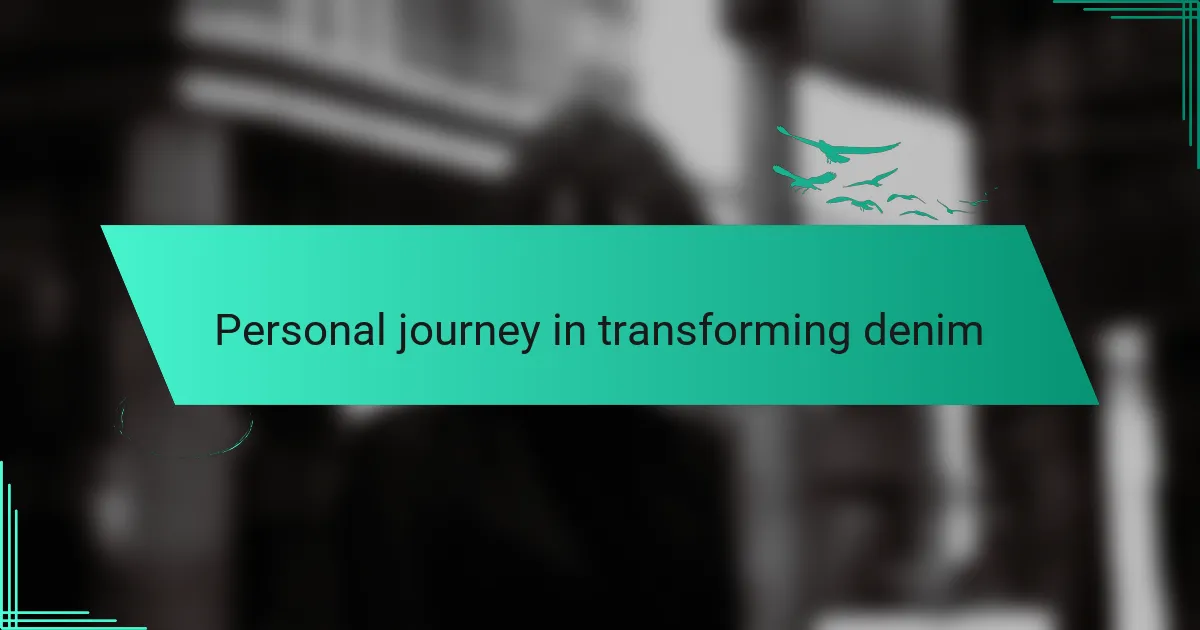
Personal journey in transforming denim
My personal journey in transforming denim has been both a creative and sentimental experience. I remember my first project vividly—turning an old pair of jeans into a stylish handbag. The thrill of repurposing something I no longer wore was incredibly satisfying and sparked my passion for DIY fashion.
As I experimented more, I discovered that each piece of denim I transformed carried a story. Whether it was distressing vintage jeans or adding embroidery to a jacket, the process was more than just about the final product; it was about expressing my individuality. I found a unique joy in breathing new life into denim, reflecting my style while making sustainable choices.
In the table below, I’ve outlined some key transformations I embraced during my journey, comparing the original items with my stylish updates.
| Original Item | Transformed Item |
|---|---|
| Old Jeans | Denim Handbag |
| Oversized Jacket | Embroidered Jacket |
| denim shirt | Denim Skirt |
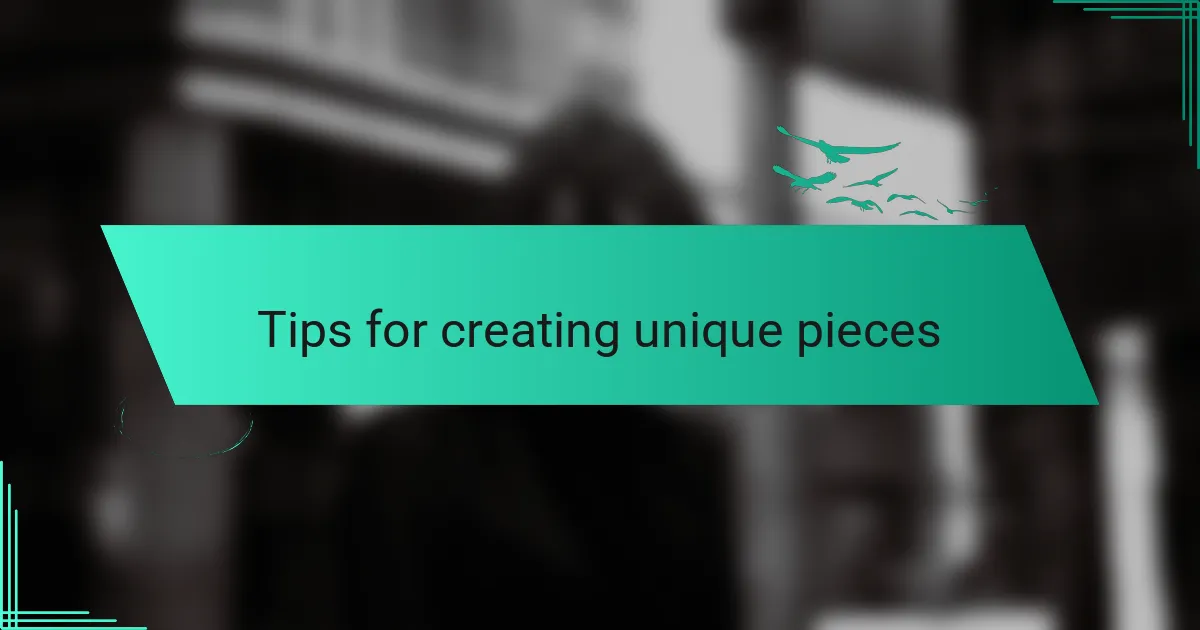
Tips for creating unique pieces
When it comes to transforming denim into unique fashion pieces, creativity is your best friend. One tip I swear by is to experiment with bleach or dye; this can give your jeans a whole new vibe. I remember taking a pair of old jeans and creating a stunning ombre effect. The thrill of watching the fabric turn from dark to light was exhilarating!
Another effective method is to add embellishments. Think about studs, patches, or even fabric paint. I once adorned an old jacket with patches from my favorite bands, and it became a conversation starter wherever I went. It’s amazing how a few thoughtful additions can completely change the personality of a piece.
Lastly, don’t shy away from cutting and distressing. You can turn a regular pair of jeans into trendy cut-offs with just a few snips. The first time I distressed a pair, I was nervous, but the end result was so rewarding and gave the jeans a fresh, edgy look.
| Technique | Description |
|---|---|
| Bleaching/Dyeing | Transform the color of denim for a unique effect. |
| Embellishments | Add patches, studs, or paint to personalize your piece. |
| Cutting/Distressing | Create raw edges or trendy cut-offs for a modern look. |
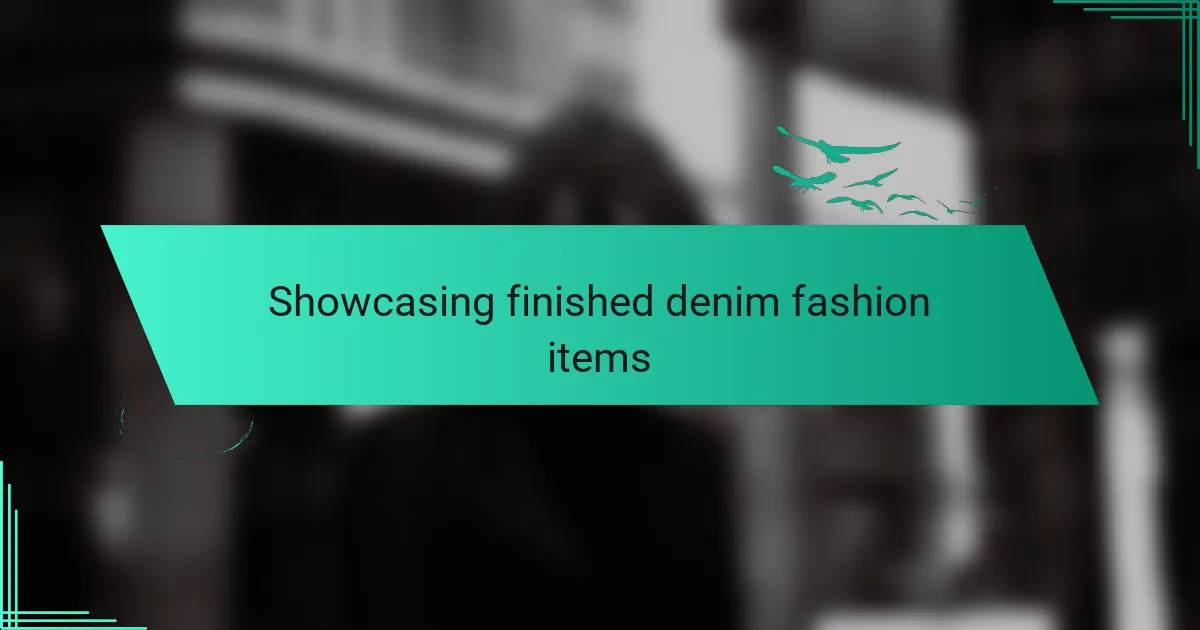
Showcasing finished denim fashion items
Showcasing finished denim fashion items feels like unveiling little pieces of my creative journey. One of my proudest moments was when I turned an oversized denim jacket into an eye-catching, embroidered masterpiece. Each stitch represented my personality, showcasing both my style and a bit of history from the fabric itself. I often find myself smiling as I wear it, not just because it looks good, but because it tells a story.
Another item that deserves a spotlight is a pair of distressed jeans I crafted last summer. I remember the rush of cutting and fraying the fabric, revealing the potential it held. When I finally tried them on, they felt more like a canvas of my experiences rather than just a piece of clothing. I couldn’t help but wonder—how many stories do these jeans carry now? Each rip and tear has become part of my narrative, something unique that reflects who I am.
I’ve also showcased a denim skirt I made from an old pair of jeans to friends, and their reactions made it even more rewarding. The joy of sharing my creation and seeing their excitement reminded me why I love this process. Transforming denim into fashion aims to not only express myself but to inspire others to see the beauty in repurposing their own materials. Wouldn’t it be incredible if more people found joy in creating rather than buying new?
